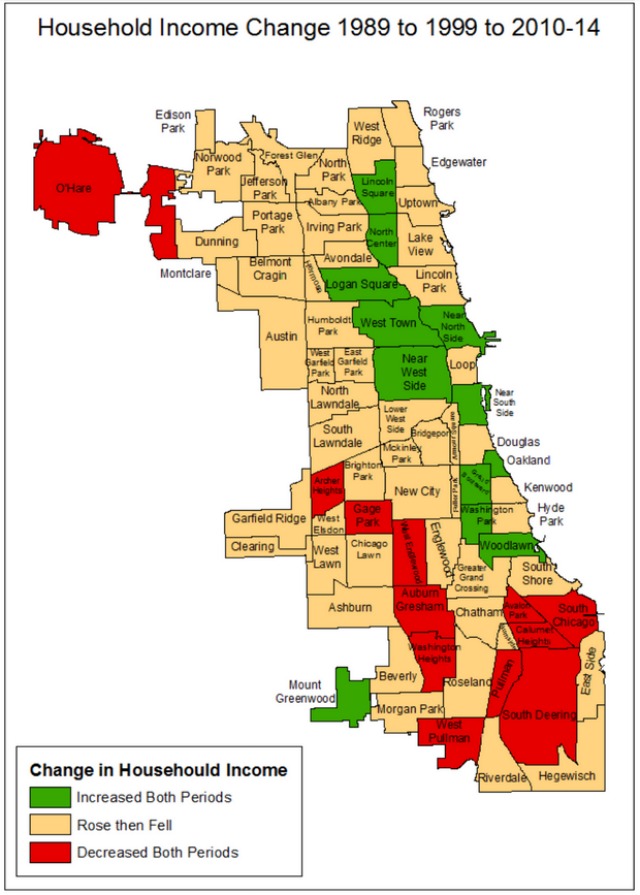Incomes Have Declined In Most Chicago Neighborhoods... Even The Rich Ones
By Stephen Gossett in News on Oct 11, 2016 7:02PM

Getty Images / Photo: Tim Boyle
On average, Chicagoans have seen their incomes decline in recent years, yet at the same time, the disparity between wealthy and poor communities has grown even more pronounced, according to a recent study from the University of Illinois at Chicago. On a more granular level, the data draws a portrait of three distinct Chicagos: rising neighborhoods, falling communities and (most of all) those treading ground in the middle.
According to the most recent numbers, from 2014, the wealthiest 10 percent of Chicago communities averaged an income of $84,158, while the poorest averaged only $21,635. That disparity, which reflects incomes after the Recession rebound, results in a ratio of nearly four—a significant jump from 1999, when the ratio was 3.5.
But a deeper dive suggests three clear-cut income patterns exist along neighborhood lines. Researchers James Lewis (UIC) and Rob Paral found 12 communities that recorded steady gains during the periods of 1989-1999 and 2010-2014, and 12 communities that showed decreases during the same timeframes.
Communities That Increased Income Both Periods:
1. Lincoln Square
2. North Center
3. Logan Square
4. West Town
5. Near North Side
6. Near West Side
7. Near South Side
8. Grand Boulevard
9. Oakland
10. Washington Park
11. Woodlawn
12. Mount Greenwood
Communities That Decreased Income Both Periods:
1. Avalon Park
2. South Chicago
3. Calumet Heights
4. Pullman
5. South Deering
6. West Pullman
7. Archer Heights
8. Gage Park
9. West Englewood
10. Auburn Gresham
11. Washington Heights
12. O’Hare
Many of the communities that saw decreases during both periods “are areas where deindustrialization took place, or where manufacturing workers had lived, and/or are not on the path of upscale housing development that has buoyed other lower-income communities,” according to the research.
But the great majority of the city is represented by the middle ground: where median income rose in the '90s but has dropped since. And while the median income of communities such as, say, Lincoln Park and The Loop are of course exponentially higher than those communities that rank among the bottom, such as Fuller Park and Riverdale, it’s noteworthy to see that they’re all among 53 (!) neighborhoods that have seen incomes drop.
Even many gentrifying areas—such as Humboldt Park, Uptown and Bridgeport—are nevertheless showing overall declines.

Rob Paral & Associates
[H/T Crain's]